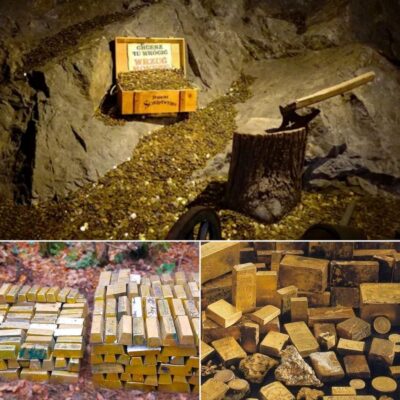Plants need proper nutrients, which involves fertilizing every year to ensure your plants have what they need to grow and thrive. Fertilizing isn’t as straightforward as you think; you have to know when and how to fertilize, or you risk killing your plants. You have to be sure you aren’t making any of these fertilizing mistakes in your garden. Here are some of the most frequent fertilizing mistakes you might make in your garden.
1. Over Fertilizing
Too much of a good thing can be harmful—or deadly. In mild cases of over-fertilization, plants exhibit excessive green growth. It may look good at first, but all this soft growth is susceptible to attack by sap-feeding insects like aphids, spider mites, and others. In more severe situations, plants may exhibit wilted, yellow leaves with brown margins. A few other signs include:
- Wilted leaves
- Yellowing leaves
- Brown margins
- Slow to mature
- Tall plants with weak stems
- Reduced root growth
- Lesions on the roots and stems
This is called fertilizer burn, and it could be deadly. Once your plants have signs of fertilizer toxicity, you cannot reverse it. Instead, water your plants thoroughly to wash away any excess fertilizer.
Do not fertilize plants that are suffering from drought or other stress factors. Always follow the directions and precautions on the product label.

2. Not Fertilizing Enough
Nitrogen is the most volatile plant nutrient and the one most often lacking in soil. It stimulates leafy growth, which allows the plant to feed itself. Phosphorus and potassium, the other two macronutrients, promote healthy roots, flowers, fruits, and the biological processes that happen within plant cells.
If you aren’t providing enough fertilizer, you’ll see several signs, such as:
- Yellowing leaves and plants
- Stunted growth
- Overall weak plant
- Leaves turning purple or reddish
- Chlorosis between leaf veins
- Dying plant tissue
Test the soil to find out what is lacking. At least once per year apply a fertilizer that contains nitrogen, phosphorus, and potassium.

3. Using the Wrong Kind of Fertilizer
Every fertilizer caters to a specific purpose indicated by the name of the product and the nutrient ratios. For example, using high nitrogen lawn food on tomato plants leads to lush foliage and no tomatoes. Applying 10-10-10 on a lawn can lead to nitrogen deficiency or buildup of phosphorus, leading to iron deficiency. Also, bear in mind that liquid fertilizer feeds and dissipates quickly, while organic and slow-release products provide a long, slow feed.
Consider the time of year and the needs of the plant before fertilizing. Choose a product that makes sense for the season and plant at hand.

4. Too Much Focus on N-P-K
The “macronutrients” get lots of hype because they are the ones that plants use in the greatest quantities. But dozens of micronutrients play crucial roles in plant health and development. If any of those are lacking, giving the plant more N-P-K alone will not solve the problem. Periodically test the soil to find out what is lacking.
Many over-the-counter soil test kits test only for N-P-K. For an accurate, detailed report that includes both macro and micronutrients, as well as pH and organic content, have your soil professionally tested. The Cooperative Extension Service typically returns test results within six weeks. You’ll receive a detailed analysis and excellent advice on improving your soil.

5. Ignoring pH
Soil acidity, or pH, plays an important role in the way that plants use fertilizer. Each plant type is adapted to live within a certain pH range. Within their ideal range, plants can use nutrients efficiently. Outside of that range, they become less efficient at nutrient uptake.
When pH is off, the required nutrients may be present in sufficient quantities, but the plant exhibits signs of nutrient deficiency. In these cases, the correction is not fertilizing—but adjusting the pH. Lime raises the pH, while sulfur, aluminum sulfate, and iron lower it.

6. Poor Timing
Plants need nutrients as they head into growth mode. Waiting to feed them until after showing signs of stress or nutrient deficiency is a recipe for weak plants, insect infestation, and disease problems. It takes a little time for dry fertilizers to work their way into the root zone and then absorbed by roots.
In gardens, apply dry fertilizers at planting time or even a few days before planting seedlings. Feed lawns as they wake up in late spring. Supplement with liquid plant food at peak growth times. Do not fertilize dormant plants as the plant food will wash away before it is used.

7. Not Testing Their Soil First
Growing a garden or caring for a landscape without periodic soil tests is wasteful. Fertilizing without test results is a guessing game. Waiting to fertilize until deficiencies appear often leads to unnecessary plant losses. It’s difficult to know the difference between true nutrient deficiency and pH problems without test results.
Have the soil professionally tested occasionally for a detailed analysis of the growing conditions, and to set a benchmark. Test frequently with over-the-counter soil pH tests and nutrient tests for regular monitoring. Use the knowledge you gain from soil testing to guide your fertility program for a healthier garden.

8. Forgetting to Fertilize Seedlings
Fertilizing starts with seedlings. Most gardeners use a seed starting mix designed for seeds, and it has enough nutrients to help your seedling get started. However, seed starting mixes don’t contain many nutrients, so as the sprouts begin to grow, you have to add fertilizer if you want your seedlings to keep growing.
Gardeners need to fertilize soon after your seedlings sprout their first true leaves. The initial leaves that emerge from seeds are called cotyledons; these aren’t the true leaves. After the cotyledons, the second set of leaves appear; these are what you want to see.
Once the first true leaves arrive, it’s time to move the seeds into larger containers, start using potting soil, and use a diluted fertilizer to half the strength. Fertilize your seedlings every two to three weeks until you transplant them in your garden.

9. Thinking All Plants Need the Same Nutrients
All plants need the primary three nutrients – nitrogen, phosphorus, and potassium. Plants also need micronutrients like calcium, magnesium, manganese, iron, and more.
However, it’s a serious fertilizing mistake to assume that all plants need the same amount of each nutrient. They don’t!
Some plants need more nitrogen than phosphorus. Some plants, like tomatoes, require more calcium than others. While all plants need the same nutrients, never assume that they need the same amount. How you fertilize each of your plants should depend on what all of your plants need individually.

10. Applying the Fertilizer Wrong
Applying granular fertilizer compared to liquid fertilizer is different. If you misapply it, your plants won’t reap all of the benefits.
Granular fertilizer may be broadcasted by hand or with a spreader. You also can side-dress the plants or rows. Dry fertilizer needs to be worked into the top 4-6 inches of the soil with a hoe, a spade, or your hands if the plants are already growing.
You have to water after you apply granular fertilizer to let the nutrients start to release. It’s important to remember that granular fertilizer takes time; it won’t immediately give your plants nutrients.
Liquid fertilizers, or water-soluble fertilizers, are dissolved in irrigation water and apply to the leaves and soil around the plant. You cannot use it at the same time as planting because it will burn the roots. Wait two to three weeks after planting to apply any liquid fertilizer.
Water your plants before applying a liquid fertilizer; it will burn the roots if the soil is dry. It has to be diluted according to the directions, or you’ll burn your plant.
It’s best to apply liquid fertilizers on dry days in the early morning or early evening to give the plant time to absorb the nutrients. You should never use this type of fertilizer on hot days!
11. Not Learning The Difference Between Processed and Organic Fertilizers
When you pick a fertilizer, you’ll notice that some are processed or organic. These fertilizers aren’t the same, and gardeners need to learn the difference before applying.
Processed fertilizers are often called synthetic or chemical fertilizers, and they’re made from natural ingredients but refined to be more concentrated. Many processed fertilizers release quickly in water, delivering nutrients to the plants rapidly.
Organic fertilizers, on the other hand, come from materials derived from plants, and the nutrients release slowly as the materials break down in the soil. When you apply organic fertilizer, you won’t need to apply it as often, but remember it takes time for the plants to reap the benefits.

12. Applying Fresh Manure as Fertilizer
Fresh manure is full of nutrients for your plants, but you cannot apply it to your garden until it’s composted. Manure contains high nitrogen levels, which plants love, but fresh manure contains so much nitrogen that it’ll burn your plants. Most plants won’t survive!
Instead, compost the manure for six to 12 months. This makes your manure usable in your garden.

13. Not Learning What Plants Need at Each Stage
Don’t forget about this fertilizing mistake. Plants often need different nutrients at different stages of growth. This is particularly true for plants that flower and produce fruits, like tomatoes, squash, and cucumbers.
Too much nitrogen during the flowering and fruiting stages leads to excessive foliage growth. During this stage, you want the plant to focus its energy on growing flowers and fruits rather than leaves. Gardeners must provide more potassium and phosphorus to encourage proper cell growth and fruiting.
Take time to read about each of the plants you want to grow this year. Not all require different fertilizers throughout the growing stage, but you need to find out ahead of time.

14. Forgetting About Micronutrients
Everyone focuses on NPK – the big three macronutrients that all plants need. Without a doubt, your plants need nitrogen, phosphorus, and potassium, but paying too much attention to NPK and forgetting about micronutrients is one of the worse fertilizing mistakes you can make.
It takes more than just three nutrients for plants to grow — dozens of micronutrients play parts in the development and health of plants.
This is another reason why you need to get a soil test because they provide detailed reports on micronutrients as well as macros. You’ll learn if your plants lack nutrients like magnesium, calcium, or iron.
15. Adding Fertilizers When You Plant Fruit Trees
You can make fertilizing mistakes when you plant fruit trees as well. Too many new orchardists apply fertilizers when they plant new fruit trees, thinking that they have the same requirements as vegetable plants.
You should never fertilize your fruit trees when you plant them.
Believe it or not, fruit trees need little nutrients at this time. They focus on growing and establishing their root systems, and fertilizer isn’t appropriate. Adding fertilizer will stimulate stem and leaf growth, which is what you don’t want.
After planting fruit trees, your goal in the first year is to let the roots grow, keeping them well watered and protected from pests, critters, and diseases. Fertilization comes later.

Thank you for spending time to see this article of Ideassimple about 15 Fertilizing Mistakes You Might Make in Your Garden. Please give us a like, comment or share if you find the article good and meaningful. Have a good day!











